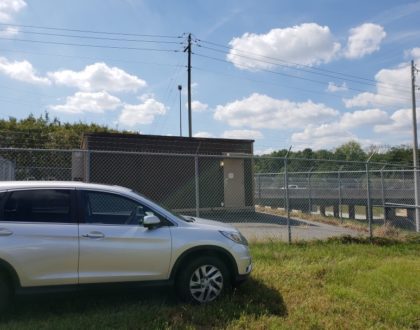Smart IoT Technology for Building Monitoring
 A “Smart Building” integrates major building systems onto a common network and shares information and functionality between systems in order to improve building operations. Benefits include using Smart Building technologies to achieve benefits in three categories: improved energy efficiency, enhanced operational effectiveness and increased tenant satisfaction. Primarily driven by the green revolution, through the use of the most technologically advanced innovative IoT-based energy solutions, customers can maximize energy efficiencies and create building intelligence in facilities management to implement material cost reductions. For example, Energy Star reports that turning up the temperature in a building by just one degree can cut energy costs by 4% to 5%.
A “Smart Building” integrates major building systems onto a common network and shares information and functionality between systems in order to improve building operations. Benefits include using Smart Building technologies to achieve benefits in three categories: improved energy efficiency, enhanced operational effectiveness and increased tenant satisfaction. Primarily driven by the green revolution, through the use of the most technologically advanced innovative IoT-based energy solutions, customers can maximize energy efficiencies and create building intelligence in facilities management to implement material cost reductions. For example, Energy Star reports that turning up the temperature in a building by just one degree can cut energy costs by 4% to 5%.
Core to a smart building is the building monitoring system providing centralized visibility of a building’s heating, ventilation, air conditioning, lighting and other systems.
- Air handlers – mix return and outside air so less temperature/humidity conditioning is needed. This can save money by using less chilled or heated water. Some external air is needed to keep the building’s air healthy. To optimize energy efficiency while maintaining healthy indoor air quality (IAQ), demand control ventilation (DCV) adjusts the amount of outside air based on measured levels of occupancy. Temperature sensors may be placed in the space or room, the return and supply air ducts, and sometimes the external air.
- Chilled water system – is used to cool a building’s air and equipment. The chilled water system will have chiller(s) and pumps. Analog temperature sensors measure the chilled water supply and return lines. The chiller(s) are sequenced on and off to chill the chilled water supply
- Hot water system – supplies heat to the building’s air-handling unit. The hot water system will have a boiler(s) and pumps. Analog temperature sensors are placed in the hot water supply and return lines. Some type of mixing valve is usually used to control the heating water loop temperature. The boiler(s) and pumps are sequenced on and off to maintain supply
- Lighting – systems can be turned on, off, or dimmed with a building automation or lighting control system based on time of day, or on occupancy sensor, photo sensors and timers. A photocell placed outside a building can sense darkness, and the time of day, and modulate lights in outer offices and the parking lot
Typical building monitoring sensor network applications include:
- Temperature and humidity monitoring
- Power usage – current monitoring
- Water Flow – Pump performance
- Air Flow – Filter clogs/ reduced performance
- Leak detection – coolant system leaks
- Pressure – air compressor system failures and leaks
- Lighting – occupancy
Despite their usefulness, there are several challenges to the use of building monitoring. First and most important are the high initial costs associated of deploying the system putting it out of reach for most small to medium size companies. With the advent of advanced wireless mesh networking technology in IoT-based systems, such as the B+B Smartworx Wzzard platform, the initial costs of deploying a sensor network is now more cost effective, dramatically reducing upfront installation costs by as much a 90% when compared to traditional wired sensor network installations.
B+B Smartworx developed the Wzzard Intelligent Sensing Platform to facilitate the coming world of connected intelligence, where machines, systems and humans will collaborate, inform and make decisions based upon sensors data. The Wzzard system is an easy to use, complete wireless sensor connectivity platform for the rapid deployment of scalable, intelligent, reliable IoT networking in remote and demanding environments. Wzzard was designed to help customers efficiently develop and deploy secure, smart, self-powered, and scalable building monitoring solutions.
The Wzzard platform uses Intelligent Edge Nodes, a wireless 802.15.4e SmartMesh IP network to transmit sensor data to the Wzzard Gateway. The network gateway communicates to the Internet via wired connections or the cellular data networks and communicates data to the application platform for data collection, dashboards and analysis. The Wzzard Intelligent Edge Nodes monitor any piece of equipment through the use of attached industry standard sensors. The Nodes provide a wide variety of sensor interface options, including general purpose analog inputs, digital input/output and thermocouple. Based on the wireless IEEE 802.15.4e standard, the Wzzard system use of SmartMesh IP mesh network is an excellent choice for condition monitoring solutions, even in harsh, dynamically changing RF environments. SmartMesh IP networks use a triple-play of wireless mesh technologies—time diversity, frequency diversity, and physical diversity—to assure reliability, resiliency, scalability, power source flexibility, and ease-of-use. Wzzard’s nodes attach automatically, and the SmartMesh IP technology dynamically self-configures to re-form the mesh network. To ensure data always reaches the gateway, nodes will determine their optimal RF paths to other nodes and back to the gateway providing up to five 9’s 99.999% data transmission reliability. Thanks to low-power wireless technology and programmable time synchronization, the Intelligent Edge Nodes can operate for multiple years on battery power.
Through the use of Eco-System Partners, B+B Smartworx can also provide a data visualization solution, giving operators access to real-time to equipment usage, trends and operational data, all in graphic Human Machine Interface (HMI) dashboard, allowing staff to remotely monitor and control the processes all from a centralized location. System allow for the configuration of alarm and remote notification that provide advanced warning of operational parameters outside the norms and allow staff to stay informed wherever they are located.
Intelligent data collection, processing and transmission also enables building monitoring systems migration beyond today’s descriptive analytics, which can only reactively describe what happened and why, towards predictive and prescriptive analytics that can derive meaning from intelligent data and proactively prescribe actions to increase efficiency and further reduce unplanned downtime.
A building monitoring system implemented with the B&B Smartworx Wzzard platform allows companies to dramatically reduce the cost of acquiring operational data and enables the operation to benefit from implementing building monitoring system and best practices.
Recommended Posts

Predictive Maintenance When Utilizing a Compressed Air System
November 12, 2018

Environmental Monitoring for Transportation Main Networking Hubs
November 7, 2018

